This short walk is instructive on the changing fortunes of areas of London. This district has been up and down and back again over the centuiries. It has certainly evolved.
Let us start with Covent Garden. Covent Garden is a corruption of "convent garden" for it was built on the gardens of Westminster Abbey. Following the dissolution of the monasteries the land became part of the estate of the Dukes of Bedford.
It was given to Inigo Jones to lay this out as the first square in London, a classical piazza, with fine town houses built for the wealthy to surround it. While still surrounded by grand old buildings, none of Inigo Jones' original houses remain.
The wealthier inhabitants moved out and the piazza gradually got taken over as a fruit and vegetable market. After that the Inigo Jones fine houses got divided up and used for gambling, brothels etc until eventually demolished. Most of the market buildings themselves date back "only" to 1830. The fruit market lasted to the 1970s (I remember the news story!), whereupon it left to go to Nine Elms and the remains escaped modern redevelopment to be the current tourist mecca of over-priced bars restaurants and shops. It should be quite attractive, but it has just fallen a bit too far into the hands of commerce. It's beauty and location have been a little over-exploited. The streets just have too many outdoor restaurants, upmarket fast food vans, etc. Of course it is great to get it to pay it's way, but the character of the place is just a little overwhelmed. And this is the good time to see it, with few tourists. In a normal summer weekend the place is absolutely heaving and avoided by all self-respecting Londoners.
Normally all the stalls would be taken....
This bronze plaque set up by the Worshipful Company of Fruiterers is all that really shows this was a fruit market for three centuries
The only part of Inigo Jones' original surrounds to the square that has survived is St Paul's church. It was London's first classical designed church. It also has a prominent oddity about it. It is built in the manner of an ancient temple with a very obvious entrance facing the square. Except that isn't an entrance. It is a false door. The Bishop of London insisted that the altar be at the eastern end of the church, which meant where the door is. So the entrances to the church are around the side and back. I guess there is no point in having pointless traditions unless you stick to them. The very silliness is probably the vital part of the faith. Empty ritual is its only firm foundation.
But the portico does include this intriguing inscription.
This is St Giles Church. It is very hard to get a decent shot of the church as unsurprisingly it is very hemmed in by other buildings. I only got this one by angling the camera through the closed gate (the Resurrection Gate") below.

The church originated in the 12th century as a leper hospital. its current Palladian form dates back "only" to 1733. St Giles was a notorious rookery in the time of Charles Dickens, at the areas lowest ebb. This was the setting for Hogarth's Gin lane. Essentially it was the home for destitutes, overcrowded and rotting dwellings, tightly packed. It was also the parish where the first signs of the Great Plague arose.
The church does have its own yard, bur views of the church from it are obscured by a very large tree.
Not a job I would fancy...
The front of the church is notable for a hotchpotch skyline of modern buildings across a busy road.
Most notable of these, and most striking by far in size and colour, is Renzo Piano's Central St Giles
Neal's yard, a quirky little spot with somewhat alternative uses, herbal remedy shops, that sort of thing.
Odhams Walk, another quirky spot, east to miss. Mostly residential with a few businesses in a bit of a modern rabbit warren.
The Royal Opera House and the Royal Ballet School have been linked with this cleverly designed but cornily titled "Bridge of Aspirations"
The Royal Opera House has a suitably grandiose street presence.
Bow Street Magistrates' court
The Freemasons Hall
Drury Lane Gardens, once graveyard, but now mostly a children's playground. little in the way of garden.
Theatre Royal Drury Lane, the oldest theatre in London. Its first building was here in 1663
Bust of Victorian theatre manager Augustus Harris.
Denmark Street seems somehow to have been left behind from an earlier era. It is a bit down at heel. It was laid out in 1687, and its tall buildings are certainly old. It was London's answer to Tin Pan Alley in the swinging sixties. It now mostly has guitar shops.
Regent Sounds studios was where many sixties bands recorded, including the Stones and the Kinks
Another obscure little place in a really busy built up area, which you would not find unless you knew where to look, is the Phoenix Garden. This really is a pocket park, a little scrap of land (once a car park, turned into a garden by local volunteers) It is a very fine example of doing an awful lot with clearly very little (space or money). A stark contrast to Windrush Square (see end of my Brixton entry) which is an example of how to produce so little out of so much.
Top give you an idea of how small these gardens are, a couple of women gossiping on a bench could be heard from all round the gardens, but not seen because of the clever planting.
A fox liked it too.
The Lamb & Flag pub is over 300 years old and suits in a nice little courtyard off the main roads. The merits of pedestrianization.
The award for most obscure blue plaque might go here...
And the fame of this building lies in its blue plaque...
Charles Dickens learned here that writing is a better career than working in a blacking factory.


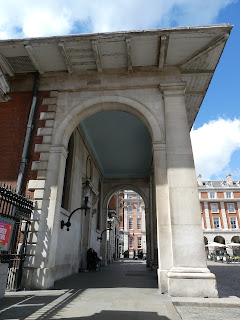







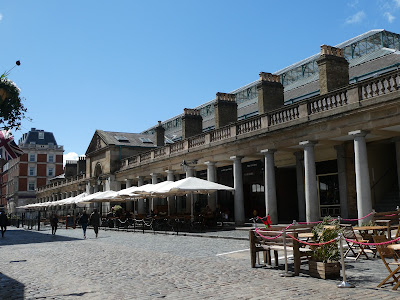







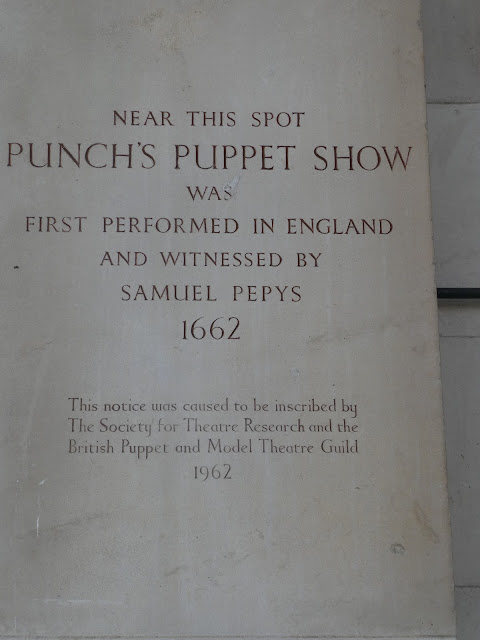






















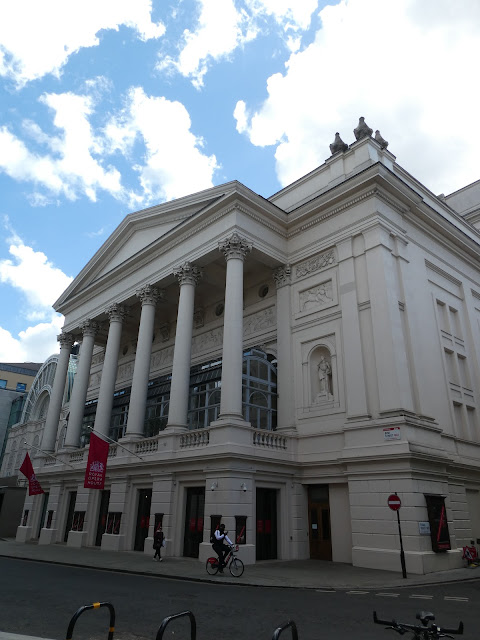




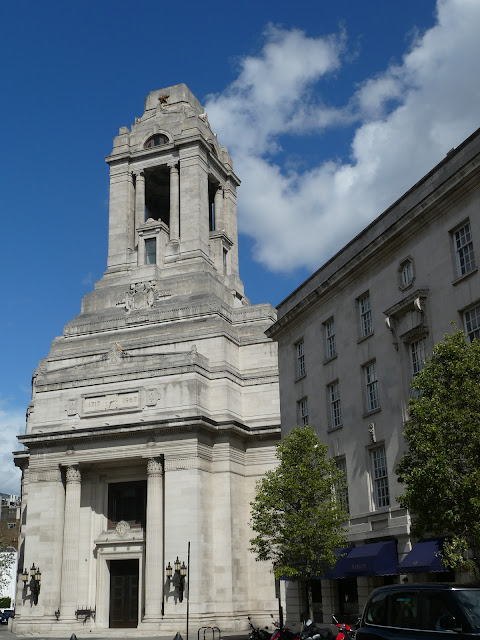
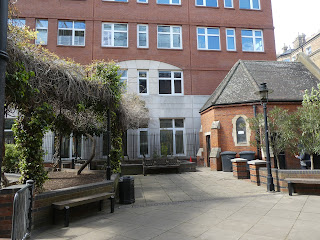

































No comments:
Post a Comment